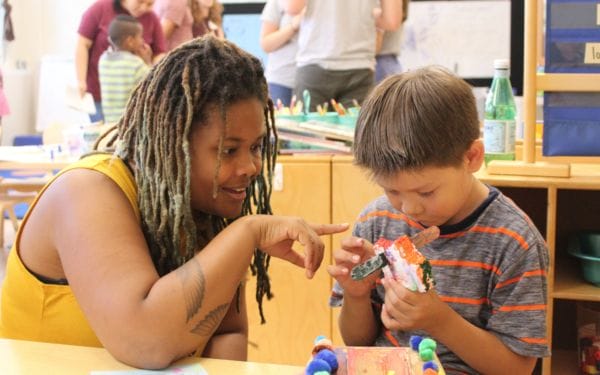April 12, 2021
By Aleta Margolis, Founder and President, Center for Inspired Teaching
Hooray for Monday is a weekly blog filled with questions, ideas, reflections, and actions we can all take to remodel the school experience for students.

This month we’re exploring Inspired Teaching’s 4 I’s.
Read last week’s post on Intellect.
How would school be different if, instead of telling our students, “Here are the things we have to learn,” we asked them, “What are the things you want to learn?”
Imagine what your students might have to say! Aren’t you curious to find out?
Here’s one way to structure an inquiry into what our students value right now. It’s grounded in the things we, as adults, know our students will benefit from learning. Consider asking your students:
If you were writing a chapter of a history textbook describing the past 12 months, what would be in it? Which people and events would you include and why? Include public figures and events: perhaps the 2020 US Presidential election, the riots at the US Capitol, Joe Biden and Kamala Harris, John Lewis, Anthony Fauci, Ruth Bader Ginsburg, Megan Thee Stallion and Cardi B. Also include personal stories or events that shine a light on what the past 12 months have been like: perhaps the mailbox in your neighborhood that was removed last fall; a relative who got Covid-19; your family learning to cook together. Describe each person and event, and tell why you decided to include them in your history of the past 12 months.
Engage in this activity imagining your own children, or your friends’ children, will read what you write 20 or 30 years from now. What do you want them to know? What takeaways do you want them to glean? What will they need to understand about this period in history?
If you want to extend this activity or make it more comprehensive for secondary students, consider asking, “What sources would you cite to support your analysis of each person, institution, and event you chose?” “Are there people, events, and institutions you’ve intentionally chosen not to include? Why?”
For all students, you can encourage them to give their chapter a title. (“What would you title this time period?”) Students can work individually or in groups, perhaps choosing public figures and events together, and deciding individually which personal details to include. Or students can come up with their entire lists individually, then collaborate by discussing and debating about which public figures and events best represent the 2020-21 experience, then narrowing down their list together.

We tend to think of inquiry as the work of the student, and it is. However, it is equally important for us as teachers. If we allow ourselves to be curious about what our students think, we’ll not only serve them better, we’ll likely encounter more joy in our work as teachers. Inspired Teaching’s definition of inquiry challenges students and teachers to engage with content and with one another from a place of authentic curiosity.
As teachers, we can engage in our own Wonder-Experiment-Learn Cycle. In this case, I wonder what my students will hold up as most important about the past year; I’ll experiment by inviting them to engage in the above exercise; I’ll learn by observing their process for choosing people and events, and listening intently to what they have to say, and then I’ll devise new questions, new things to wonder about that may well spark my next lesson, through which I will continue to experiment, learn, and wonder again.
Taking this further, we as teachers and school leaders can wonder together how student voice and choice could become a mainstay in our classrooms, schools, city, and beyond. Then we can experiment by finding more and more ways to put our young people in charge. We’ll learn a lot with each iteration, and that will prompt new wonderings.
Embracing inquiry in this way enables us to imagine things as they might be, instead of being content with, or resigned to, things as they are. Next week, we’ll delve further into reinventing school as we explore the third I, Imagination.
